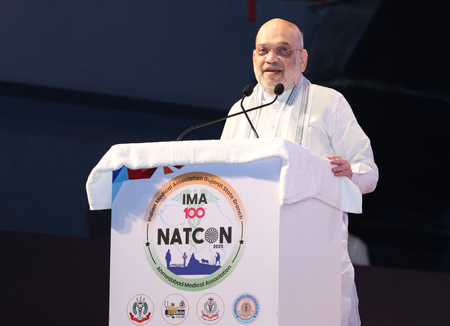
Faridabad, Sep 4 (IANS) About 15-20 per cent spinal injuries in India occur due to road accidents, which can be effectively managed by minimally invasive surgeries, said an orthopaedic surgeon on Monday ahead of the World Spinal Cord Injury Day.
World Spinal Cord Injury Day is observed on September 5 annually to raise awareness on spine injuries.
According to Dr. Ashish Tomar, Senior Consultant — Orthopaedics and Spine Surgery, Sarvodaya Hospital, Faridabad, the chance of sustaining a serious spine and associated multiple injuries in road traffic accidents is quite high in our society today.
“We are receiving more and more patients of trauma and spinal cord injuries now due to the increasing number of road accidents.
“This may be due to the low level of safety standards in vehicle manufacturing, absence or inadequacy of appropriate safety measures in vehicles, and poorly designed roads and problems in quality of driving to mention some reasons,” Tomar told IANS.
“There has been an increase of 15-20 per cent in spinal injuries due to road accidents in the last 10 years, as people tend to drive faster.”
Tomar said 90 per cent spinal cord injuries can effectively be managed with minimally invasive surgery. “Spine surgeries are very safe, with minimal risk. However, many patients tend to suffer spinal pain for years and keep avoiding surgery. They do not want their spine to be touched at all. Such patients come to us at a stage when the treatment becomes very challenging due to deterioration in the condition of the spine over time,” he said.
Minimally invasive surgeries of the spine have been in vogue for the last 15-20 years globally and have become mainstream in India too.
“Now, 90 per cent of all our spinal surgeries are minimally invasive. Vast majority of all spinal injuries that we see relate to lower areas of the spine, including the lumbar and lower thoracic region. These are effectively managed with minimally invasive surgery. For upper-level injuries in the cervical (neck) and upper thoracic area, open spine surgery is still preferred. However, here too, doctors have begun to use smaller incisions,” the doctor noted.
He said that the benefit of minimally invasive spinal surgery is that the patient can be discharged from the hospital in a couple of days and can get back to their routine sooner.
“This is in sharp contrast to traditional surgery that requires 3 to 4 months to get back to one’s routine lifestyle.”
He also advised people to mandatorily wear protective seat belts to reduce chances of serious spine injury.
In addition, bad posture also has serious effects on spine health, Dr. Tomar said.
“Bad back posture, especially while sitting on a chair for long hours, puts strain on the spine due to compression. It can trigger certain diseases like myelopathy that make people more susceptible to spinal injuries. Compression on the spine for many years tends to weaken it, due to which it can get injured even with minor jerks.”
–IANS
rvt/vd




